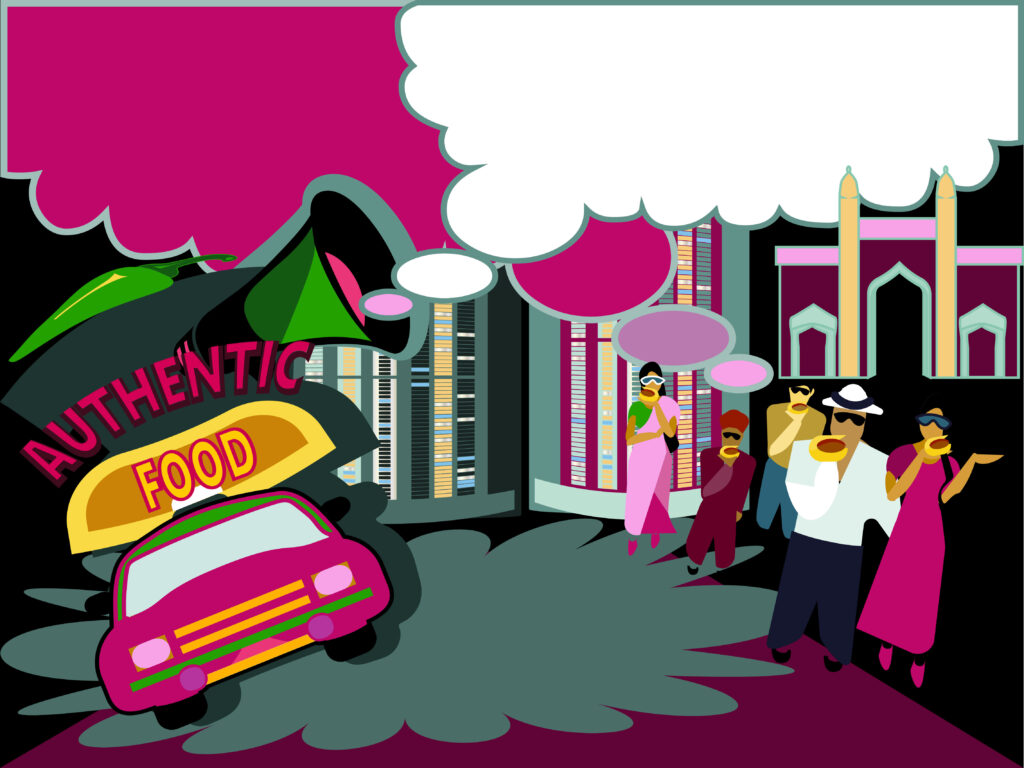
Desi Dhabba Restaurants VS International Food Chains
Walking by the big yellow M, I wondered how each of these international food chains evolved. And if they have a separate story of their own, like our Desi Dhaba restaurants. I wonder if there was ever a time when the very owner gathered an audience around his first order-counter. And, distributed the restaurant’s special and narrated the success story as well as future goals associated with his to-be international food chain. I wonder how similar, yet so different they are, from the local Dhabas.
Along the same lines, being well-acquainted with the Dhaba restaurants as well as the international food chains in my vicinity, I often find it difficult to choose between the two. Is the bun kebab offered by the Dhaba, a better deal than Optp’s Original GMC that costs twice as much? Is it wiser to take my guests to a place hustling and bustling offering cultural exposure to my homeland, or the dainty tables and chairs of the sophisticated restaurants? Only a thorough analysis can help one figure out the correct answers to such dubious questions. Therefore, to help myself and all the confused folks out there, I’ve managed to collate a comprehensive comparison. I hope it helps!
Dhaba and International Food Chain-What is the difference?
With several Desi Dhabas sprouting in every Pakistani street, it is unjustified to deny the fact that we endorse the traditional environment. Dhabas is an ancient term referring to the roadside restaurants where local cuisine gets served. Incredibly, one may only find these Dhabas in Pakistan and India. The olden sub-continent still shares a similar Dhabas culture
On the other hand, Pakistanis also relish the international food chains engulfed in urban and modern aura. Located at reasonably long distances, the global food chains in Pakistan continue to prosper at an ever-increasing rate.
Desi Dhabas and international food chains-both are a source of nutrition to people, and we truly cherish it. But what’s the difference? Well, let’s dive deep into the subject and scrutinize the difference!
History and Background
Tracing its origin to a word that translates into a lunchbox or tiffin, Dhaba is a twisted, revised, and remodeled version of Dabba. These Desi restaurants first sprouted up beside petrol stations on the highways, and also served as truck stops that delivered local cuisine 24/7. The roadside eatery is better known as Punjabi Dhaba due to its Punjabi descent. Apart from the generic history and origin, each Dhaba has a rich background of its own. To get the hold of the story, you only need to spend 20 rupees on a hot cup of chai and secure a chair amongst the regular customers. Trust me you’re going to know everything from ‘how Chacha Muffasir started with only a small stall’ and managed to establish the big name.
However, you may not hear interesting, genuine stories of the international restaurants in Pakistan because it’s just the flyers and online platforms that convey this information to the customers. Lack of details and human emotion is a significant setback that makes the story of most international food chains appear dry, dull, and inauthentic.
Hygiene, Quality, and Atmosphere
Early in the morning, when the dewdrops glaze the green leaves and warm sun rays gradually battle against the night’s cold, Pakistani working adults steadily make their way to the local Desi Dhaba. Following the routine, they navigate their path amongst the increasing crowd, place the order, find a suitable spot, and await the warm Chai Paratha to charge up their lethargic bodies.
These people carry on ignorantly, habitual of the flies buzzing around, the collected water spreading algae along the road corners. The cook absent-mindedly using the same hands to stir the tea, fry the egg, and wipe off his sweaty forehead. Well, the scenario might flood you with a feeling of disgust, but the fact is undeniable. We Pakistanis prefer to ignore the food quality as long as the resultant food suits our taste. In terms of hygiene and diet, the local Dhabas appear to fail us.
On the contrary, the international food chains not only claim to provide high-quality, palatable food cooked under top-notch hygiene standards but, also prove to do so. Individual dining in a popular food chain will experience an outstanding restaurant quality with scented-air and sterilized cutlery. With the class-laden atmosphere, one might be confident of the fact that food consumption is hygienic. However, the atmosphere and ambiance may develop feelings of unease. The international food chains may succeed in providing quality food but certainly not a comfortable environment by pushing the traditional atmosphere far away.
A Pakistani can merely dine at an international food chain, but not relish it. The absence of the loud laughter, cultural jokes, and traditional songs played distantly in the background deprive the sophisticated ambiance of international restaurants from the charm of Dhaba restaurant.
Conclusion
In a cup of tea, the comparison of Dhabas and international food chains prove to be a controversial topic, which does not provide anyone side a clear advantage over the other. It appears that Dhabas and global food chains contribute equally to the Pakistani cultural values. The presence of both types of restaurants opens up an array of options for the people to choose. The dominance of one over another may threaten cultural diversity and encourage social imbalance.
Romaisa
Accurate!!!☕